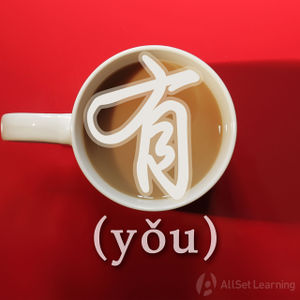Difference between revisions of "Expressing "in addition" with "haiyou""
| Line 17: | Line 17: | ||
<div class="liju"> | <div class="liju"> | ||
| − | *你 需要 吃 点 药。<em>还有</em>,要 多 休息。<span class="trans">You need to take some medicine and get more rest.</span> | + | *你 需要 吃 点 药。<em>还有</em>,要 多 休息。<span class="pinyin">Nǐ xūyào chī diǎn yào. <em>Hái yǒu</em>, yào duō xiūxí.</span><span class="trans">You need to take some medicine and get more rest.</span> |
| − | *你 跟 他 一起 去 吧。<em>还有</em>,别 忘 了 带 这 些 材料。<span class="trans"></span> | + | *你 跟 他 一起 去 吧。<em>还有</em>,别 忘 了 带 这 些 材料。<span class="pinyin">Nǐ gēn tā yīqǐ qù ba. <em>Hái yǒu</em>, bié wàng le dài zhèxiē cáiliào.</span><span class="trans">Go with him. Also, don't forget to bring this material.</span> |
| − | *我 今天 要 考试。<em>还有</em> ,我 必须 要 写 完 中文 作文。<span class="trans">Oh, man! I’m going to have a exam today and I have to finish writing my Chinese essay.</span> | + | *我 今天 要 考试。<em>还有</em> ,我 必须 要 写 完 中文 作文。<span class="pinyin">Wǒ jīntiān yào kǎoshì.<em>Hái yǒu</em>, wǒ bìxū yào xiě wán Zhōngwén zuòwén.</span><span class="trans">Oh, man! I’m going to have a exam today and I have to finish writing my Chinese essay.</span> |
| − | *今天 特别 倒霉,他的 女朋友 离开 了 他,<em>还有</em> 他 的 老板 要 解雇 他。<span class="trans">Today it's really unlucky. His girlfriend left him and on top of that, his boss is going to fire him.</span> | + | *今天 特别 倒霉,他的 女朋友 离开 了 他,<em>还有</em> 他 的 老板 要 解雇 他。<span class="pinyin">Jīntiān tèbié dǎoméi, tā de nǚ péngyǒu líkāile tā, <em>hái yǒu</em> tā de lǎobǎn yào jiěgù tā.</span><span class="trans">Today it's really unlucky. His girlfriend left him and on top of that, his boss is going to fire him.</span> |
</div> | </div> | ||
Revision as of 17:19, 22 December 2014
-
Level
-
Similar to
- Expressing "and" with "he" (A1)
- Expressing "and also" with "hai" (A2)
- Expressing "except" and "in addition" with "chule… yiwai" (B1)
- Expressing "in addition" with "lingwai" (B1)
- Expressing "in addition" with "zaishuo" (B1)
- Expressing "not only... but also" with "budan... erqie..." (B1)
- Using "budan... geng" to express "not only... but also" (B2)
- Expressing "as well as" with "yiji" (C1)
-
Used for
-
Keywords
"还有" (háiyǒu) is used to express "In addition..." in a conversation. It is introducing new information to the topic the speaker(s) is/are talking about. While it's not the most challenging grammar structure, an important thing to keep in mind is that 还有 starts a completely new sentence or clause.
Structure
It's as simple as using 还有 before the new clause or sentence. 还有 can also be used with a comma, similar to how we can say "in addition, . . ." in English.
Clause 1 , 还有 + (,)+ Clause 2
Examples
- 你 需要 吃 点 药。还有,要 多 休息。You need to take some medicine and get more rest.
- 你 跟 他 一起 去 吧。还有,别 忘 了 带 这 些 材料。Go with him. Also, don't forget to bring this material.
- 我 今天 要 考试。还有 ,我 必须 要 写 完 中文 作文。Oh, man! I’m going to have a exam today and I have to finish writing my Chinese essay.
- 今天 特别 倒霉,他的 女朋友 离开 了 他,还有 他 的 老板 要 解雇 他。Today it's really unlucky. His girlfriend left him and on top of that, his boss is going to fire him.
See also
Sources and further reading
Books



